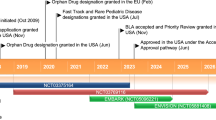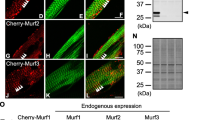Summary
A large bulk of experimental evidence (15) suggests that myogenic cell transfer can be regarded as a promising therapeutic approach in the cure of inherited pathologies. In particular, it has been shown that primary myoblasts obtained from embryonic or neonatal muscles allows the recovery of the normal phenotype in defective muscle tissues. The utilization of this approach in clinical settings still bears heavy limitations. Apart from the legal and ethical difficulties, the use of muscles obtained from aborted fetus is challenged by a large risk of rejection, due to the incompatibility between donor and recipient. In this context based on the genetic alteration and reimplanting of the patient’s own satellite cells, appears an approach attractive. Myoblasts derived from satellite cells are the obligate candidates for experiments, but the production of sufficient cell numbers is a major problem. Local anesthetics [Bupivacaine (1-n-butyl-DL-piperidine-2-carboxylic acid-2, 6-dimethyl anilide hydrochloride) and related molecules] had been used to induce myofiber damage (and thus satellite cells proliferation) and thereby may represent a tool for increasing the yield of myoblasts from adult muscles (1,9,17). We will show that satellite cells obtained from adult muscles after bupivacaine injection can be transfected in vitro and that the transfected gene is expressed in vitro and in vivo, after reimplantation of the modified myoblasts in recipient muscles.
Similar content being viewed by others
References
Alameddine, H. S.; Dehaupas, M.; Fardeau, M. Regeneration of skeletal muscle fibers from autologous satellite cells multiplied in vitro. An experimental model for testing cultured cell myogenicity. Muscle Nerve 12:544–555; 1989.
Allbrook, D. Skeletal muscle regeneration. Muscle Nerve 4:234–245; 1981.
Bischoff, R. A satellite cell mitogen from crushed adult muscle. Dev. Biol. 115:140–147; 1986.
Campion, D. R. The muscle satellite cell: a review. Int. Rev. Cytol. 87:225–251; 1984.
Cantini, M.; Massimino, M. L.; Sivieri, S., et al. Rat myogenesis in vitro: MHC 1 expression in myotubes co-cultured with either spinal cord or dorsal ganglia explants. Bas. Appl. Myol. 2:191–201; 1992.
Cantini, M.; Sartore, S.; Schiaffino, S. Myosin types in cultured muscle cells. J. Cell Biol. 85:903–909; 1980.
Carraro, U.; Dalla Libera, L.; Catani, C. Myosin light and heavy chains in muscle regenerating in absence of the nerve. Transient appearance of the embryonic light chain. Exp. Neurol. 79:106–117; 1983.
Dai, Y.; Roman, M.; Naviaux, R. K., et al. Gene therapy via primary myoblasts: long-term expression of factor IX protein following transplantation in vivo. Proc. Natl. Acad. Sci. USA 89:10892–10895; 1992.
Funanage, V. L.; Smith, S. M.; Minnich, M. A. Entactin promotes adhesion and long-term maintenance of cultured regenerated skeletal myotubes. J. Cell. Physiol. 150:251–257; 1992.
Jones, P. H. Implantation of cultured regenerate muscle cells into adult rat muscle. Exp. Neurol. 66:602–610; 1979.
Mauro, A. Satellite cells of skeletal muscle fibers. J. Biophys. Biochem. Cytol. 9:493–495; 1961.
Moss, F. P.; Leblonde, C. P. Satellite cells as the source of nuclei in muscles of growing rats. Anat. Rec. 170:421–436; 1971.
Mulligan, R. C. The basic science of gene therapy. Science 260:926–932; 1993.
Norton, P. P.; Coffin, J. M. Bacterial β-galactosidase as a marker of Rous sarcoma virus gene expression and replication. Mol. Cell. Biol. 5:281–290; 1985.
Partridge, T. A. Invited review: myoblast transfer: a possible therapy for inherited myopathies? Muscle Nerve 14:1023–1031; 1991.
Partridge, T. A.; Morgan, J. E.; Coulton, G. R., et al. Conversion of mdx myofibers from dystrophin-negative to -positive by injection of normal myoblasts. Nature 337:176–179; 1989.
Perusi, C.; Fiorini, E.; Massimino, M. L., et al. Miogenesi in vitro: Un metodo per decuplicare la resa di cellule satelliti da muscolo adulto. In: Carraro, U.; Dalla Libera, L., eds. Elettroforesi e cromatografia di biopolimeri e loro frammenti. Padova: Unipress. 1993:76–81.
Sambrook, J.; Fritsch, E. F.; Maniatis, T. Molecular Cloning. A laboratory manual, second edition. Cold Spring Harbor Laboratory Press; 1989.
Sanes, J. R.; Rubenstein, J. L. R.; Nicolas, J.-F. Use of recombinant retrovirus to study post-implantation cell lineage in mouse embryos. EMBO J. 5:3133–3142; 1986.
Schmalbruck, H. The morphology of regeneration of skeletal muscles in the rat. Tiss. Cell 8:673–692; 1976.
Schroedl, N. A.; Funanage, V. L.; Bacon, C. R., et al. Hemin increases aerobic capacity of cultured regenerating skeletal myotubes. Am. J. Physiol. 255:C519–525; 1988.
St. Louis, D.; Verma, I. M. An alternative approach to somatic cell gene therapy. Proc. Natl. Acad. Sci. USA 85:3150–3154; 1988.
Watt, D. J.; Morgan, J. E.; Partridge, T. A. Use of mononuclear precursor cells to insert allogeneic genes into growing mouse muscles. Muscle Nerve 7:741–750; 1984.
Wolff, J. A.; Dowty, M. E.; Jiao, S., et al. Expression of naked plasmid by cultured myotubes and entry of plasmids into T tubules and caveolae of mammalian skeletal muscle. J. Cell Sci. 103:124P-125P; 1992.
Author information
Authors and Affiliations
Rights and permissions
About this article
Cite this article
Cantini, M., Massimino, M.L., Catani, C. et al. Gene transfer into satellite cell from regenerating muscle: Bupivacaine allows β-gal transfection and expression in vitro and in vivo. In Vitro Cell Dev Biol - Animal 30, 131–133 (1994). https://doi.org/10.1007/BF02631405
Accepted:
Issue Date:
DOI: https://doi.org/10.1007/BF02631405




